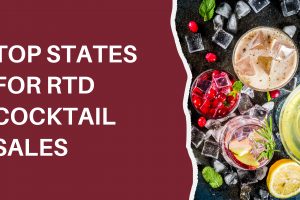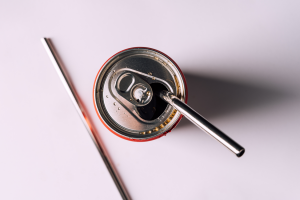
Essential Talks – Beam Suntory’s Heather Body on RTD Innovation Strategy


Ready-to-drink alcohol products have taken the U.S. by storm in recent years further blurring the lines between the three traditional categories of beer, wine and spirits. RTD cocktails alone saw a 35.6% overall increase in consumption from 2019 to 2020, compared to 4.6% growth for the entire spirits category, according to data from Beverage Information Group. The category represents just over 9.1 million cases.
In 2020, the leading brands were Jose Cuervo, Monaco Cocktails, 1800 Ultimate Margarita, Cutwater and Chi-Chi’s, but there were quite a few brands further down the rankings that saw a big jump in performance last year including: Twisted Shotz (+26%), Skinnygirl (+19%), BuzzBallz(+19.5%), and Bacardi RTD (+310%)
Below are the top ten markets for prepared cocktail consumption based on nine-liter cases sold in 2020.
Along with representing the top market for overall consumption, California also saw the biggest year-to-year increase in consumption of all the top markets, with consumption spiking 37.1% from 2019.
Texas took the second overall spot with the Dallas-Ft. Worth-Arlington area consuming 170k of the state’s 745k total cases.
The Miami-Ft. Lauderdale area represented a top five metropolitan area in the country for RTD cocktails, consuming 207k cases.
The Chicago-Naperville-Joliet area was the top ranked metropolitan area in the nation for consumption of RTD cocktails, consuming 504k of the state’s 569k cases.
New Jersey also ranked 10th overall in per capita consumption with 58 cases consumer per 1,000 people.
Missourians worked hard to make it into the top markets for RTD cocktails, consuming 73 cases per 1,000 people and coming in third in the nation for per capita consumption.
Pennsylvania is the top control state for RTD cocktail consumption and the only control state to show up in the top ten markets for overall RTD consumption.
New York also saw strong year-over-year growth with a 36.4% increase in RTD cocktail consumption from 2019.
Colorado was another market in the top five for per capita consumption, with 66 cases consumed per 1,000 people.
Indiana sold 70k more cases of RTD cocktails in 2020 than they did in 2019 to earn their way into the final spot in the top ten markets.
If you’d like to learn more about the top markets in beverage alcohol, check out our summary on the Top Ten States for Tequila Sales.

With the rise of the RTD category being a recent phenomenon, entrepreneurs have noticed a significant opportunity for product differentiation. Entrepreneurs must find the right SKUs for their brand in terms of scalability and maximizing consumer engagement.
In this talk, Zack Lister, CEO of Bodega Brands, gives us a window into the launch of his brand and why a single SKU strategy worked for him. He discusses some keys to success like the need to be decisive on the product development side of things and identifying a target audience early on in the process.
“Be mindful of your working capital, build it,” advises Lister. “Get feedback and repeat it as much as you can. For us it was really about identifying our target audience.”

As consumers around the world were stuck in their homes for months on end in 2020, the ready-to-drink (RTD) cocktail category soared as consumers looked for ways to still enjoy bar-quality cocktails.
And while most spirits categories have begun to slow the pace of growth compared to the peak pandemic period, RTDs have continued to outpace last year. The category was up 163% in the off-premise for the four weeks ending May 1, reports Nielsen.
So whether you’re thinking about extending your existing brand to include an RTD or launching an entirely new RTD brand, here is the best advice from our experts on Park Street University.
Adding an RTD is a major commitment for wine and spirits producers and much more involved than simply a line extension or a new category, according to Mark Shilling, a partner at Big Thirst Consulting and former president of the American Craft Spirits Association. Wineries and distilleries have plenty of stills and tanks, but additional equipment such as brite tanks, brew kettles, a commercial juicer, pasteurization system, or a canning line may be necessary for RTD production.
Similarly, there are new production techniques that will come along with the creation of an RTD you intend to scale, including getting the carbonation and mixology correctly. Brewers are familiar with ways to control diastaticus, a brewer’s yeast that can cause a can to explode if not controlled properly, but it’s not typically something a distillery would come into contact with.
“It’s not something you can decide to do at a small scale and play around with it a little bit. Everything about this is like creating an entirely new business.” says Shilling.
L.A.-based Greenbar Distillery’s decision to launch an RTD was born of a failed attempt to use cocktail-making classes to increase bottle sales.
“It finally dawned on us that people love to drink, they just hate to make that drink,” says Melkon Khosrovian, CEO of Greenbar Distillery. “The re-revolution that took place 20 years ago to reintroduce high-quality cocktails to the public—first through speakeasies and then mixology bars, and pretty much now any corner bar—stops more or less for most people at the home. They’re too tired, too busy, or too challenged to make those drinks at home.”
In 2018, Cardinal Spirits launched an RTD line inspired by the most popular cocktails in its tasting room. Unlike with 750ml bottles or cocktails, cans can travel with consumers and are more likely to be photographed on social media at the pool, at a party, on a hike etc.
“Our fans are now our brand ambassadors, effortlessly helping tell our story and sharing images of our cans,” says Erica Sagon, the Director of Communications for Cardinal Spirits.
By 2020 the RTD offering was the distillery’s No. 1 product by volume.
LIQS, a premium shot RTD that launched in 2014, but sold to E&J Gallo earlier this week, grew its brand by owning the festival circuit. Instead of paying expensive sponsorship fees at festivals, LIQS was able to get into events through concession sales where they sell thousands of individual shots per event. “Always, always try to speak to the beverage buyer and the concessionaire, not brand partnerships because their first question is ‘What’s your budget,’” says LIQS Founder Michael Glickman.
Following one of the brand’s first festivals, the LIQS team brought in a professional photographer and made a book that detailed the margins and sales potential festival partners could make if they brought in LIQS.
“The point of this is… leverage relevant success to build up case studies to create more opportunities,” says Glickman. “Fast forward six months after we did our first festival, we had 20 festivals under our belt and it almost became a no-brainer. Whoever didn’t say yes to us, you’re an idiot.”

Diageo has acquired vodka-based ready-to-drink (RTD) cocktail brand Loyal 9 from Sons of Liberty Spirits Company. Loyal 9 was launched in 2018 in Rhode Island. It has a 9% ABV and comes in Lemonade, Mixed Berry Lemonade and Watermelon Lemonade flavors.
“Loyal 9 hits an RTD ‘sweet spot’, merging American consumers’ growing appreciation for better-quality ingredients with the full-flavor lemonade they love, and a classic Americana feel,” says Debra Crew, president, Diageo North America.
Diageo has made a number of moves in recent months to back the burgeoning RTD cocktail category. This investment is Diageo’s second RTD acquisition this year, following the purchase of Lone River Ranch Water last month. Additionally, the company announced it would invest $80 million to expand production on its RTD products this year as well.
“We have a clear strategy to build and diversify our RTD offerings across price points and consumer segments, and Loyal 9 is a great addition to our portfolio,” says Crew.
Diageo’s full portfolio of RTD products also includes Crown Royal Ready to Drink Cocktails, Tanqueray Crafted Gin Cocktails and Ketel One Botanical Vodka Spritz.